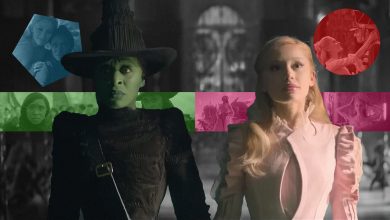MANILA, PHILIPPINES — When Downton Abbey launched in 2010, few people beyond creator Julian Fellowes probably thought that the show would amount to anything. It was, after all, a period piece featuring the British aristocracy shown in contrast with the servants they share a home with. Flash forward 12 years later and a second Downton Abbey film has been made, proving that Fellowes’ show resonated with a 21st-century audience more than anyone expected.
It is 1928 and the Crawley family celebrates the wedding of Tom Branson (Allen Leech) to Lucy Smith (Tuppence Middleton). The Dowager Countess Violet Crawley (Maggie Smith) then surprises the family by informing them that she has inherited a villa in the south of France by the late Marquis de Montmirail, someone she met in the 1860s.
Even as Violet plans to bequeath the villa to Tom’s daughter Sybbie, everyone is intrigued about the reason it was gifted to Violet in the first place. Meanwhile, a film crew requests the opportunity to film at Downton. As estate manager, Lady Mary Talbot (Michelle Dockery) is willing to accept after the film producers make an impressive offer for the shoot.
Mary stays behind at Downton to supervise the filming with most of the house staff but the rest of the Crawleys head for France after accepting the invitation of the new Marquis (Jonathan Zaccal). The Marquis’ mother, Madame Montmirail (Nathalie Baye) disapproves of their visit and plans to contest her husband’s will.
As the moviemakers arrive at Downton, the house staff are excited to see the movie stars Guy Dexter (Dominic West) and Myrna Dalgleish (Laura Haddock). Unfortunately for director Jack Barber (Hugh Dancy), something is threatening to end his kind of movies altogether: talking films.
To say that this second Downton Abbey movie is mere fan service to fans of the TV show would be insulting. After all, Fellowes and the many writers and directors of the series had several episodes over the course of six seasons to fully thresh out their large cast of characters. Like in the first film released in 2019, more focus was placed on some to fit in the two-hour running time.
It’s been said many times that although Hugh Bonneville as Robert Crawley and Elizabeth McGovern as wife Cora are technically the leads of the series, Michelle Dockery eventually supplants them. Her story became central by the series’ end and it continues to be the case here.
The best lines seemed to always go to Dame Maggie Smith, especially when she was verbally sparring with her frenemy, Isobel Grey (Penelope Wilton). Smith masterfully played the Dowager Countess from the beginning, reviving an acting career in her 80s that never really went away. For her mysterious past to be the subject of two movies now is quite an accomplishment and speaks well of the cast’s love for the actress and character.
It is perhaps no surprise then, that at 87, Violet’s demise at the film’s end really signals a formal close to the Downton Abbey story. For what more could Fellowes & Co. write for Smith that has not been done before? Throughout Downton Abbey: A New Era, a passing of the torch to Mary is mentioned and it really feels that way in the end.
The splitting of the cast into two big groups makes sense when you consider that it was shot during the pandemic, necessitating control of smaller groups. By introducing more intrigue in Lady Violet’s past, it adds a layer to both her character and her son Robert, allowing Bonneville to flex some acting muscle.
Speaking of which, the surprising sickness that Cora has to deal with also shed some much-needed spotlight on McGovern, who has too often been left in the background throughout the series’ run. Edith (Laura Carmichael) wasn’t necessarily cast aside despite finding happiness with Bertie (Harry Hadden-Paton) either as she began a return to her magazine.
The film production subplot also introduces the dilemma actors faced in the late 1920s as talking pictures began their inevitable domination. West was a welcome addition to the ensemble as he’s always shown flexibility in portraying both lead and supporting roles.
The biggest surprise was probably Haddock, who could have easily been comfortable with playing the stereotypical beautiful ingenue. Instead, she introduces nuance with her surprising lower-class accent and petulance as she feared the specter of sound in movies.
For Mary’s husband Henry (played by Matthew Goode in the show and the previous film) not to appear at all in the sequel, Mary seems as alone as Violet did since the series began. Goode’s schedule and the pandemic probably kept him from filming, but his absence is felt whenever it was mentioned, and when Barber is attracted to Mary.
Regarding the help, since Anna (Joanne Froggatt) had already married Mr. Bates (Brendan Coyle), Mrs. Hughes (Phyllis Logan) already married Mr. Carson (Jim Carter), and even young Lucy (Sophie McShera) had married Albert (Michael C. Fox), there were still some singles left to be paired off.
That was resolved by this film’s end with the proposal of Mr. Molesley (Kevin Doyle) to Ms. Baxter (Raquel Cassidy). Mrs. Patmore (Leslie Nicol) is also cozying up to Mr. Mason (Paul Copley). Even lonely Thomas Barrow (Robert James-Collier) is given some kind of companionship in the form of Guy Dexter.
With the children of Mary, Edith, and Tom getting older, Lady Violet’s passing didn’t feel rushed or forced but a natural progression of life. Yet fans of the show won’t help but feel a tinge of sadness with this development because we’ve all enjoyed Smith being such a central figure on Downton Abbey for so long.
Downton Abbey: A New Era is screening exclusively in Ayala Cinemas.








